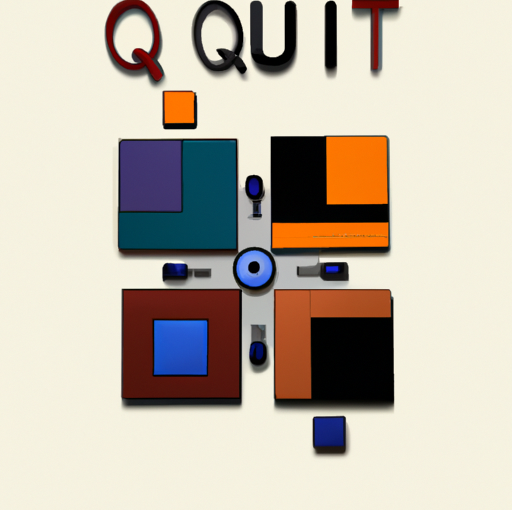-
LucksCasino.com Online - Live Casino ,Blackjack, Roulette, Slots, Telephone Gambling & Bets: Professional Article Sequence
- Introduction
- Why Disconnecting All Slots of a QObject is Important
- The Benefits of Disconnecting All Slots in Qt Programming
- How to Properly Disconnect All Slots in Your Qt Application
- Best Practices for Using QObject Disconnect in Your Code
- Common Mistakes to Avoid When Disconnecting All Slots in Qt
- Debugging Tips for Issues with QObject Disconnect
- Advanced Techniques for Managing Signals and Slots in Qt Applications
- Using QObject Disconnect to Improve Performance and Efficiency
- Exploring the Inner Workings of QObject Disconnect in Qt
- Understanding the Role of Signals and Slots in Qt Programming
- Tips for Optimizing Your Code with QObject Disconnect
- Real-World Examples of Using QObject Disconnect in Qt Applications
- Future Developments and Updates for QObject Disconnect in Qt 6
- Q&A
- Conclusion
"Effortlessly disconnect slots with QObject Disconnect."
Introduction
QObject is a basic class in Qt framework that gives a number of functionalities to handle objects in the appliance. One in all its important features is the sign and slot mechanism, which permits communication between objects. Nevertheless, typically it may be essential to disconnect all slots from a specific sign. On this case, the QObject::disconnect() technique can be used to take away all connections between a sign and its slots.
Why Disconnecting All Slots of a QObject is Essential
When working with Qt, it is widespread to make use of indicators and slots to speak between objects. Indicators are emitted by an object when a specific occasion happens, and slots are capabilities which are referred to as in response to these indicators. This mechanism permits for a versatile and decoupled design, the place objects can work together with out realizing something about every other's implementation details.
Nevertheless, there may be conditions the place you might want to disconnect all slots of a QObject. This can be achieved utilizing the QObject::disconnect() perform with no arguments, which can disconnect all connections involving the item. On this article, we are going to discover why disconnecting all slots of a QObject is vital and once you may must do it.
One purpose why you may wish to disconnect all slots of a QObject is to forestall reminiscence leaks. When an object is deleted, any connections involving that object must also be disconnected. If this is not achieved correctly, the linked objects may maintain references to the deleted object, stopping it from being rubbish collected. By disconnecting all slots of the item earlier than deleting it, you ensure that there are not any lingering connections that might trigger reminiscence leaks.
Another excuse why you may wish to disconnect all slots of a QObject is to avoid surprising habits. When an object emits a sign, all linked slots might be referred to as in order. If a type of slots modifies the state of the item or its linked objects in an surprising means, it might trigger issues for other elements of your utility. By disconnecting all slots earlier than making adjustments to the item or its surroundings, you can ensure that there are not any unintended negative effects.
Along with these sensible causes for disconnecting all slots of a QObject, there are additionally some design issues that may make it fascinating. For instance, in case you have a posh system with many interconnected objects and indicators/slots, it can be troublesome to maintain monitor of every part that is occurring at runtime. By periodically disconnecting all slots after which reconnecting them as wanted, you can simplify your code and cut back the risk of bugs attributable to surprising interactions between objects.
In fact, there are additionally some potential downsides to disconnecting all slots of a QObject. For instance, in case you have a number of threads interacting with the identical set of objects by way of indicators/slots, disconnecting every part might trigger synchronization points or race circumstances. Equally, in case your utility depends closely on dynamic connections (i.e., connections made at runtime quite than at compile time), disconnecting every part might break some performance.
To avoid these points whereas nonetheless benefiting from the benefits of disconnecting all slots when essential, it is vital to fastidiously think about your utility's structure and necessities. You must also check your code completely after making any adjustments associated to sign/slot connections.
In conclusion, whereas it may not at all times be essential or fascinating to disconnect all slots of a QObject in your Qt functions, there are definitely conditions the place doing so can help forestall reminiscence leaks and surprising habits whereas simplifying your codebase. By understanding when and why this method may be helpful – in addition to its potential drawbacks – you can make knowledgeable selections about how greatest to construction your utility's sign/slot interactions for optimum efficiency and reliability.
The Advantages of Disconnecting All Slots in Qt Programming
In Qt programming, QObject is a basic class that gives the bottom for all Qt objects. It is a robust instrument that enables builders to create complicated functions with ease. One of the vital features of QObject is its capability to attach indicators and slots. Indicators are emitted by an object when a specific occasion happens, whereas slots are capabilities which are executed in response to these occasions.
Whereas connecting indicators and slots is an important a part of Qt programming, there may be times when it turns into essential to disconnect all slots from a specific sign. This can be achieved utilizing the QObject::disconnect() perform. On this article, we are going to discover the advantages of disconnecting all slots in Qt programming.
One of many major advantages of disconnecting all slots is improved efficiency. When a sign is emitted, all linked slots are executed sequentially. If there are various linked slots, this can outcome in important delays and decelerate the appliance's efficiency. By disconnecting all slots, you can eradicate this delay and enhance your utility's general efficiency.
One other advantage of disconnecting all slots is elevated flexibility. Once you join a sign to a slot, you're primarily making a dependency between two objects. This can make it troublesome to change or prolong your code in a while. By disconnecting all slots, you can break these dependencies and make your code more versatile and simpler to keep up.
Disconnecting all slots can additionally help you debug your code more simply. When you've gotten many linked slots, it can be difficult to find out which slot is inflicting a specific problem or bug in your utility. By disconnecting all slots, you can isolate the problem and give attention to debugging that particular slot.
Lastly, disconnecting all slots can help you avoid potential reminiscence leaks in your utility. Once you join a sign to a slot, Qt creates an inside connection object that manages the connection between the 2 objects. If you don't correctly disconnect these connections when they're now not wanted, they can accumulate over time and result in reminiscence leaks in your utility. By disconnecting all slots when they're now not wanted, you can avoid these potential reminiscence leaks and ensure that your utility runs easily.
In conclusion, whereas connecting indicators and slots is an important a part of Qt programming, there may be times when it turns into essential to disconnect all slots from a specific sign. Doing so can present a number of advantages similar to improved efficiency, elevated flexibility, simpler debugging, and avoiding potential reminiscence leaks in your utility. As with all programming approach or instrument, it is important to make use of QObject::disconnect() perform judiciously and solely when essential for optimum outcomes in your utility improvement course of.
The best way to Correctly Disconnect All Slots in Your Qt Software
When growing a Qt utility, it is important to ensure that all connections between objects are correctly managed. One of the essential features of managing these connections is disconnecting all slots when they're now not wanted. Failing to take action can result in reminiscence leaks and other points that can negatively impression the efficiency of your utility.
On this article, we are going to focus on find out how to correctly disconnect all slots in your Qt utility. We are going to cowl the totally different strategies obtainable for disconnecting slots, in addition to some greatest practices to observe when managing connections between objects.
The primary technique for disconnecting all slots in your Qt utility is to make use of the QObject::disconnect() perform. This perform lets you disconnect a selected sign-slot connection or all connections involving a specific object. To disconnect all slots involving an object, you can call the QObject::disconnect() perform with the item as its argument.
One other approach to disconnect all slots in your Qt utility is to make use of the QMetaObject::disconnectSlots() perform. This perform lets you disconnect all slots linked to a specific sign with out getting access to the item that emits the sign. To make use of this perform, you might want to acquire a pointer to the QMetaObject related to the sign and call its QMetaObject::disconnectSlots() perform.
Whereas each of those strategies are efficient for disconnecting all slots in your Qt utility, there are some greatest practices that you need to observe when managing connections between objects. One in all these greatest practices is to make use of scoped connections every time potential.
Scoped connections are a type of connection that robotically disconnects when both the sender or receiver object is destroyed. This type of connection ensures that there are not any reminiscence leaks or other points attributable to lingering connections between objects.
To create a scoped connection, you can use the QObject::join() perform with the Qt::AutoConnection flag. This flag tells Qt to create a scoped connection that robotically disconnects when both object is destroyed.
One other greatest follow for managing connections between objects is to avoid utilizing global indicators and slots every time potential. Global indicators and slots can be troublesome to handle and can result in surprising habits if not correctly dealt with.




As a substitute, it is advisable that you just use native indicators and slots every time potential. Local indicators and slots are created inside an object's scope and are solely accessible inside that scope. This makes them simpler to handle and fewer prone to trigger surprising habits in your utility.
In conclusion, correctly managing connections between objects in your Qt utility is important for guaranteeing optimum efficiency and avoiding points similar to reminiscence leaks. When it comes time to disconnect all slots in your utility, there are a number of strategies obtainable, together with utilizing QObject::disconnect() or QMetaObject::disconnectSlots(). Nevertheless, it is additionally vital to observe greatest practices similar to utilizing scoped connections and avoiding global indicators and slots every time potential. By following these greatest practices, you can ensure that your Qt utility runs easily and effectively with none surprising points attributable to lingering connections between objects.
Finest Practices for Utilizing QObject Disconnect in Your Code
When working with Qt, it's normal to make use of indicators and slots to speak between objects. Nevertheless, there may be times when you might want to disconnect a slot from a sign. This is the place the QObject disconnect perform comes in helpful.
The QObject disconnect perform lets you take away a connection between a sign and a slot. This can be helpful in conditions the place you now not need an object to obtain indicators from one other object.
Probably the greatest practices for utilizing QObject disconnect is to at all times specify the item that you just wish to disconnect from. This ensures that you're solely eradicating the connection between the particular objects that you just intend to.
For instance, for instance you've gotten two objects: ObjectA and ObjectB. ObjectA has a sign referred to as mySignal, and ObjectB has a slot referred to as mySlot. You join these two objects utilizing the next code:
QObject::join(ObjectA, SIGNAL(mySignal()), ObjectB, SLOT(mySlot()));
To disconnect this connection, you'd use the next code:
QObject::disconnect(ObjectA, SIGNAL(mySignal()), ObjectB, SLOT(mySlot()));
By specifying each ObjectA and ObjectB in the disconnect perform, you ensure that solely this particular connection is eliminated.
One other greatest follow for utilizing QObject disconnect is to at all times check if a connection exists earlier than trying to take away it. This can forestall errors in your code and ensure that you're solely eradicating connections that truly exist.
To check if a connection exists, you can use the QObject::disconnect perform with no arguments. It will return true if any connections exist for the desired object.
For instance:
bool isConnected = QObject::disconnect(ObjectA);
If isConnected is true, then there are connections for ObjectA that can be disconnected.
It is also vital to notice that when utilizing QObject disconnect, you need to at all times make sure that any pointers or references to the disconnected objects are up to date accordingly. Failure to take action can outcome in undefined habits and potential crashes in your utility.
As well as, it is vital to think about the order in which indicators and slots are linked and disconnected. If a number of connections exist between two objects, they are going to be eliminated in reverse order of how they have been created.
For instance:
QObject::join(ObjectA, SIGNAL(mySignal()), ObjectB, SLOT(mySlot()));
QObject::join(ObjectA, SIGNAL(mySignal()), ObjectC, SLOT(myOtherSlot()));
QObject::disconnect(ObjectA, SIGNAL(mySignal()), ObjectC, SLOT(myOtherSlot()));
QObject::disconnect(ObjectA, SIGNAL(mySignal()), ObjectB, SLOT(mySlot()));
On this instance, we first join ObjectA's mySignal to each ObjectB's mySlot and ObjectC's myOtherSlot. We then disconnect these connections in reverse order: first we take away the connection between mySignal and myOtherSlot for ObjectC earlier than eradicating the connection between mySignal and mySlot for ObjectB.
General, utilizing QObject disconnect can be a robust instrument when working with indicators and slots in Qt functions. By following these greatest practices - specifying objects when disconnecting connections; checking if connections exist earlier than trying disconnection; updating pointers or references accordingly; contemplating connection order - you can ensure that your code stays sturdy and dependable whilst your utility grows more complicated over time.
Frequent Errors to Avoid When Disconnecting All Slots in Qt
When working with Qt, it is widespread to make use of indicators and slots to speak between objects. Nevertheless, there may be times when you might want to disconnect all slots from a specific sign. This can be a difficult job, and there are some widespread errors that builders make when trying to take action.
One of the widespread errors is not correctly disconnecting all slots. Once you call the QObject::disconnect() perform with no arguments, it would disconnect all connections for that object. Nevertheless, in case you have a number of objects linked to the identical sign, this is not going to disconnect all of them. To ensure that all connections are correctly disconnected, you might want to go in the particular sign and slot that you just wish to disconnect.
One other mistake is not checking if a connection exists earlier than trying to disconnect it. If you happen to try to disconnect a non-existent connection, your program may crash or behave unexpectedly. To avoid this, at all times check if a connection exists earlier than trying to disconnect it.
It is additionally vital to notice that once you disconnect a slot from a sign, the slot will now not obtain any additional indicators from that object. Which means in case you reconnect the slot in a while, it is not going to obtain any indicators that have been despatched whereas it was disconnected.
One other mistake is not correctly managing object lifetimes. When an object is deleted, any connections involving that object will robotically be disconnected. Nevertheless, in case you delete an object whereas it nonetheless has lively connections, these connections may nonetheless exist and trigger points in your program. To avoid this, at all times make sure to correctly handle object lifetimes and ensure that all connections are correctly disconnected earlier than deleting an object.
Lastly, it is vital to think about thread security when working with indicators and slots. When you've got a number of threads accessing the identical objects and indicators/slots, you might want to ensure that your code is thread-safe and that all connections are correctly synchronized.
In conclusion, when working with Qt indicators and slots, it is vital to be conscious of widespread errors when disconnecting all slots from a sign. At all times make sure to correctly handle object lifetimes and check for present connections earlier than trying to disconnect them. Moreover, think about thread security when working with a number of threads accessing the identical objects and indicators/slots. By avoiding these widespread errors, you can ensure that your code behaves as anticipated and avoids surprising crashes or habits.
Debugging Tips for Points with QObject Disconnect
When working with Qt, it is not unusual to come across points with QObject disconnect. This can be a irritating problem to cope with, however fortuitously, there are some debugging suggestions that can help you resolve the difficulty.
At the start, it is vital to know what QObject disconnect is and the way it works. In Qt, indicators and slots are used for communication between objects. A sign is emitted when a specific occasion happens, and a slot is a perform that is referred to as in response to that sign. Once you join a sign to a slot utilizing the QObject::join() perform, you determine a connection between the 2 objects.
Nevertheless, typically you may must disconnect a sign from its related slot. This can be achieved utilizing the QObject::disconnect() perform. Once you call this perform, you break the connection between the sign and slot.
So what occurs when there's a problem with QObject disconnect? One widespread problem is that indicators may not be correctly disconnected from their slots. This can result in surprising habits in your utility.
To debug this problem, one strategy is to make use of qDebug(). This perform lets you output debug messages to the console. By including qDebug() statements all through your code the place indicators are being linked or disconnected, you can get a greater understanding of what is occurring behind the scenes.
One other useful gizmo for debugging points with QObject disconnect is the Qt Creator debugger. This highly effective instrument lets you step by way of your code line by line and see precisely what's occurring at every step. By setting breakpoints at key factors in your code the place indicators are being linked or disconnected, you can get a greater understanding of what is going on incorrect.
It is also value noting that there are some widespread errors that builders make when working with indicators and slots in Qt. For instance, it is vital to ensure that each the sign and slot have the identical number of arguments and that their sorts match up appropriately. If there is a mismatch here, then QObject disconnect may not work as anticipated.
One other mistake that builders typically make is failing to correctly handle object lifetimes. When an object is deleted, any connections it has established with other objects needs to be damaged as effectively. If this is not achieved appropriately, then indicators may continue to be emitted even after an object has been deleted.
In conclusion, points with QObject disconnect can be irritating to cope with however there are a number of debugging suggestions that can help you resolve them. Through the use of tools like qDebug() and the Qt Creator debugger, in addition to avoiding widespread errors like mismatched argument sorts and improper object lifetime administration, you can ensure that your indicators and slots work as anticipated in your Qt utility.
Superior Strategies for Managing Indicators and Slots in Qt Functions
In Qt functions, indicators and slots are used to speak between objects. Indicators are emitted by an object when a specific occasion happens, and slots are capabilities which are executed in response to these indicators. Managing indicators and slots is an important a part of growing Qt functions, and there are a number of superior methods that can be used to make this course of more environment friendly.
One in all these methods is the usage of QObject::disconnect() to disconnect all slots linked to a specific sign. This perform can be helpful in conditions the place you might want to briefly disable a sign or once you wish to take away all connections between two objects.
To make use of QObject::disconnect(), you first must acquire a pointer to the item that emits the sign. You can do that utilizing the QObject::findChild() perform or by storing a pointer to the item when it is created. After getting a pointer to the item, you can call QObject::disconnect() with the suitable parameters.
The primary parameter of QObject::disconnect() is the sender object, which is the item that emits the sign. The second parameter is the sign itself, which is specified as a string containing its title. The third parameter is the receiver object, which is the item that has one or more slots linked to the sign. Lastly, the fourth parameter is an optionally available slot title, which specifies a specific slot to disconnect.
If you happen to omit the fourth parameter, all slots linked to the sign might be disconnected from the receiver object. This can be helpful if you wish to take away all connections between two objects or if you might want to briefly disable a sign with out eradicating its connections completely.
For instance, suppose you've gotten a QPushButton that emits a clicked() sign when it is clicked. You might have linked this sign to a number of slots in your utility utilizing QObject::join(). To disconnect all these slots from the button briefly, you can call QObject::disconnect() with the next parameters:
QObject::disconnect(button, SIGNAL(clicked()), 0, 0);
It will disconnect all slots linked to the clicked() sign of button till new connections are made.
One other superior approach for managing indicators and slots in Qt functions is utilizing QSignalBlocker class. This class supplies a simple means of blocking indicators from being emitted by an object briefly whereas performing some operations on it.
To make use of QSignalBlocker class, create an occasion of it with a pointer to an object whose indicators needs to be blocked as its argument. When this occasion goes out of scope (i.e., destroyed), indicators will robotically unblock once more.
For instance:
{
QSignalBlocker blocker(button);
// Carry out some operations on button
} // Indicators unblocked robotically
In conclusion, managing indicators and slots in Qt functions requires cautious consideration and planning. Superior methods similar to utilizing QObject::disconnect() and QSignalBlocker class can help make this course of more environment friendly and efficient. By understanding these methods and incorporating them into your improvement workflow, you can create sturdy and dependable Qt functions that meet your customers' needs.
Utilizing QObject Disconnect to Enhance Efficiency and Effectivity
In software improvement, efficiency and effectivity are essential components that decide the success of an utility. A method to enhance these components is through the use of the QObject Disconnect function. This function permits builders to disconnect all slots from a specific sign, which can considerably enhance the efficiency of an utility.
Earlier than delving into find out how to use QObject Disconnect, it is important to know what indicators and slots are. In Qt, indicators and slots are used for communication between objects. A sign is emitted when a specific occasion happens in an object, whereas a slot is a perform that will get executed in response to that occasion.
When an object emits a sign, all linked slots get executed sequentially. This course of can be time-consuming and resource-intensive, particularly if there are various linked slots. In such instances, utilizing QObject Disconnect can help enhance the efficiency of an utility.
To make use of QObject Disconnect, builders must call the disconnect() perform on the item whose sign they wish to disconnect from all slots. The syntax for this perform is as follows:
QObject::disconnect(senderObject, SIGNAL(signalName()), receiverObject, SLOT(slotName()));
On this syntax, senderObject is the item that emits the sign, signalName is the title of the sign being emitted, receiverObject is the item that has linked slots to this sign, and slotName is the title of the slot being disconnected.
When calling QObject Disconnect with no arguments specified for receiverObject and slotName parameters (i.e., calling QObject::disconnect(senderObject, SIGNAL(signalName()))), all connections between senderObject's sign and any linked slots might be disconnected.
It is vital to notice that when utilizing QObject Disconnect with no arguments specified for receiverObject and slotName parameters, all connections between senderObject's sign and any linked slots might be disconnected. Which means if there are other objects with linked slots to this sign moreover receiverObject, their connections can even be disconnected.
One other factor to maintain in thoughts when utilizing QObject Disconnect is that it solely disconnects connections made utilizing Qt's join() perform. If connections have been made utilizing other strategies or libraries outdoors of Qt's framework, they will not be affected by this perform.
In conclusion, utilizing QObject Disconnect can considerably enhance the efficiency and effectivity of an utility by disconnecting all slots from a specific sign. Nevertheless, builders needs to be cautious when utilizing this function because it may have an effect on other objects' connections in the event that they're additionally linked to the identical sign. Moreover, it is important to keep in mind that solely connections made utilizing Qt's join() perform might be affected by this function. By retaining these issues in thoughts and correctly implementing QObject Disconnect the place essential, builders can optimize their functions' efficiency and effectivity.
Exploring the Internal Workings of QObject Disconnect in Qt
In Qt, QObject is a basic class that gives the essential performance of an object-oriented programming language. It is the bottom class for many of the Qt lessons and supplies a number of features similar to indicators and slots, properties, and occasion dealing with. One of the vital features of QObject is its capability to attach and disconnect indicators and slots.
Disconnecting indicators and slots is a vital side of programming in Qt. It permits builders to take away connections between objects when they're now not wanted or once they want to be up to date. On this article, we are going to discover the inside workings of QObject disconnect in Qt.
What is QObject Disconnect?
QObject disconnect is a technique that enables builders to take away connections between indicators and slots. When a sign is emitted, it triggers all linked slots. Nevertheless, there may be conditions the place you wish to take away these connections. For instance, in case you have a widget that shows information from a database, you may wish to disconnect the widget from the database when it is closed.
The syntax for disconnecting a sign from a slot in Qt is as follows:
disconnect(sender, sign, receiver, slot);
Right here sender is the item that emits the sign, sign is the title of the sign being emitted, receiver is the item that receives the sign, and slot is the title of the slot being referred to as.
Disconnecting All Slots
Generally you may wish to disconnect all slots linked to a specific sign. This can be achieved utilizing QObject::disconnect() technique with no arguments:
disconnect();
It will take away all connections between indicators and slots for this object.
It is vital to notice that this technique solely removes connections for this specific object. If there are other objects linked to those indicators or slots, their connections will live intact.
Disconnecting Particular Slots
If you happen to solely wish to take away particular connections between indicators and slots, you can use QObject::disconnect() with particular arguments:
disconnect(senderObject, SIGNAL(signalName()), receiverObject, SLOT(slotName()));
It will take away solely these connections the place senderObject emits signalName() which was linked to receiverObject's slotName().
Utilizing Lambda Features
Lambda capabilities are anonymous capabilities that can be used as an alternative of named capabilities in C++. They're helpful once you want a small perform that does not want a reputation or when you do not wish to create a separate perform only for one use case.
In Qt 5 onwards lambda capabilities can even be used as slots:
join(button1,&QPushButton::clicked,[=](){qDebug()<<"Button 1 clicked";});
Right here now we have linked button1's clicked() sign with lambda perform which prints "Button 1 clicked" on console every time button1 is clicked.
To disconnect this connection we can use following code:
disconnect(button1,&QPushButton::clicked,nullptr,nullptr);
It will take away all lambda capabilities linked with button1's clicked() sign.
Conclusion
In conclusion, QObject disconnect in Qt supplies builders with a simple approach to take away connections between indicators and slots. Whether or not you wish to take away all connections or simply particular ones, QObject::disconnect() technique makes it straightforward to take action. Moreover, utilizing lambda capabilities as slots makes it even simpler to attach and disconnect indicators with out having to create separate named capabilities. By understanding how QObject disconnect works in Qt, builders can ensure their functions run easily with none undesirable connections between objects.
Understanding the Position of Indicators and Slots in Qt Programming
Qt is a well-liked cross-platform utility improvement framework that gives builders with a variety of tools and libraries to create high-high quality functions. One of the highly effective features of Qt is its sign and slot mechanism, which permits objects to speak with every other in a versatile and environment friendly means.
Indicators and slots are used to determine connections between objects in Qt. A sign is an occasion that an object emits when one thing occurs, similar to a button being clicked or a worth altering. A slot is a perform that can be referred to as when a sign is emitted, permitting the item to reply to the occasion.
The QObject class is the bottom class for all Qt objects that support indicators and slots. It supplies a number of strategies for managing connections between indicators and slots, together with the join() technique for establishing new connections and the disconnect() technique for breaking present ones.
The disconnect() technique can be used to take away all connections between an object's indicators and slots. This can be helpful in conditions the place you wish to briefly disable an object's performance or reset its state.
To disconnect all slots from a QObject, you can call the QObject::disconnect() technique with no arguments:
```
QObject::disconnect(sender);
```
It will take away all connections between the sender object's indicators and any linked slots.
If you wish to disconnect solely particular indicators or slots, you can go their pointers as arguments to the disconnect() technique:
```
QObject::disconnect(sender, SIGNAL(sign()), receiver, SLOT(slot()));
```
It will take away the connection between the desired sign of the sender object and the desired slot of the receiver object.
It is vital to notice that once you use QObject::disconnect(), it's essential to present precisely the identical arguments that have been used when establishing the connection. If you happen to do not, Qt will not be capable to find and take away the connection.
One other factor to maintain in thoughts is that in case you're utilizing lambda capabilities or functors as slots, you will not be capable to use QObject::disconnect() straight. As a substitute, you will must retailer a reference to the connection object returned by join() and use it later to disconnect:
```
auto connection = QObject::join(sender, &Sender::sign, [&]() { /* ... */ });
// ...
QObject::disconnect(connection);
```
Along with QObject::disconnect(), there are a number of other strategies for managing connections between indicators and slots in Qt. For instance, you can use QObject::blockSignals() to briefly disable all indicators emitted by an object or QObject::deleteLater() to schedule an object for deletion after all pending occasions have been processed.
Understanding how indicators and slots work in Qt is important for growing sturdy and versatile functions. Through the use of these mechanisms successfully, you can create complicated interactions between objects with out having to fret about low-degree details like thread synchronization or message passing. And with tools like QObject::disconnect(), you've gotten even more management over how your utility behaves at runtime.
Tips for Optimizing Your Code with QObject Disconnect
In terms of optimizing your code, there are various methods and tools obtainable to help you obtain the perfect efficiency potential. One such approach is utilizing QObject disconnect to take away pointless connections between indicators and slots.
QObject is a basic class in Qt that gives the core performance for all Qt objects. It is used extensively in Qt functions to handle object relationships, sign-slot connections, and occasion dealing with. One of the highly effective features of QObject is its capability to attach indicators and slots, which permits objects to speak with every other in a versatile and environment friendly means.
Nevertheless, as your utility grows in complexity, you may find that you've created too many sign-slot connections, which can result in efficiency points. This is the place QObject disconnect comes in helpful.
QObject disconnect lets you take away a connection between a sign and a slot. This can be helpful once you now not want a specific connection or once you wish to optimize your code by lowering the number of connections.
To make use of QObject disconnect, you might want to have entry to each the sender object and the receiver object. You additionally must know the title of the sign and slot which are linked. After getting this information, you can call the disconnect technique on the sender object.
For instance, for instance you've gotten a QPushButton object that emits a clicked sign every time it is clicked. You might have linked this sign to a slot in one other object referred to as MyObject utilizing the next code:
join(myButton, SIGNAL(clicked()), myObject, SLOT(handleButtonClick()));
If you happen to later resolve that you just now not want this connection, you can use QObject disconnect to take away it:
disconnect(myButton, SIGNAL(clicked()), myObject, SLOT(handleButtonClick()));
By doing this, you're telling Qt to not call handleButtonClick() anymore when myButton is clicked.
One factor to maintain in thoughts when utilizing QObject disconnect is that it solely removes one connection at a time. If there are a number of connections between two objects or if an object has a number of connections with totally different objects, you'll need to call disconnect a number of times.
One other vital consideration when utilizing QObject disconnect is that it needs to be used sparingly. Eradicating connections can have unintended penalties if not achieved fastidiously. For instance, in case you take away a connection that was essential to your utility's performance, your utility may cease working appropriately.
To avoid these points, it is vital to completely check your code after eradicating any connections with QObject disconnect. You must also make sure that any other elements of your code that depend on these connections are up to date accordingly.
In conclusion, QObject disconnect is a robust instrument for optimizing your code by eradicating pointless sign-slot connections. Nevertheless, it needs to be used with warning and solely after cautious consideration of its potential impression in your utility's performance. By following the following tips and greatest practices for utilizing QObject disconnect successfully, you can enhance the efficiency of your Qt functions whereas minimizing any destructive negative effects.
Real-World Examples of Utilizing QObject Disconnect in Qt Functions
In Qt functions, the QObject class is a basic constructing block that gives the inspiration for a lot of other lessons. It is used to create objects that can talk with every other by way of indicators and slots. Indicators are emitted by an object when one thing occurs, whereas slots are capabilities which are referred to as in response to a sign.
One of the vital features of QObject is its capability to attach indicators to slots. This permits objects to speak with every other in a versatile and environment friendly means. Nevertheless, there may be times when you might want to disconnect all slots from a sign. This can be helpful in conditions the place you wish to briefly disable certain performance or reset the state of an object.
There are a number of ways to disconnect all slots from a sign in Qt functions. One strategy is to make use of the QObject::disconnect() perform. This perform takes 4 arguments: the sender object, the sign title, the receiver object, and the slot title. If you happen to go 0 because the receiver object, all connections for that sign might be disconnected.
For instance, suppose you've gotten a QPushButton object that emits a clicked() sign when it is clicked. You might have linked this sign to a number of slots utilizing QObject::join(). To disconnect all these connections, you can call QObject::disconnect() like this:
QObject::disconnect(button, SIGNAL(clicked()), 0, 0);
It will take away all connections for the clicked() sign of the button object.
One other approach to disconnect all slots from a sign is to make use of the QMetaObject::disconnect() perform. This perform takes three arguments: the sender object, the sign index (which can be obtained utilizing QMetaObject::indexOfSignal()), and the receiver object. If you happen to go 0 because the receiver object, all connections for that sign might be disconnected.
For instance, suppose you've gotten a customized class MyWidget that emits a customized sign mySignal() when some occasion happens. You might have linked this sign to a number of slots utilizing QObject::join(). To disconnect all these connections, you can call QMetaObject::disconnect() like this:
const QMetaObject* meta = MyWidget::staticMetaObject;
int index = meta->indexOfSignal("mySignal()");
QMetaObject::disconnect(this, index, 0);
It will take away all connections for the mySignal() sign of any occasion of MyWidget.
Along with these strategies, there are additionally some comfort capabilities supplied by Qt that permit you to disconnect all connections for a specific sender or receiver object. For instance:
QObject::disconnect(sender); // Disconnects all indicators from sender
QObject::disconnect(receiver); // Disconnects all indicators acquired by receiver
These capabilities can be helpful if you wish to rapidly take away all connections involving a specific object.
General, there are various real-world situations the place utilizing QObject disconnect can be useful in Qt functions. For instance:
- Resetting an object's state: If an object has accrued too many connections over time and its habits has grow to be unpredictable or inefficient, disconnecting all its indicators and slots can help reset its state.
- Briefly disabling performance: If you wish to briefly disable certain performance in your utility (e.g., throughout startup or shutdown), disconnecting related indicators and slots can help obtain this.
- Debugging: If you happen to suspect that some surprising habits in your utility is attributable to incorrect or undesirable connections between objects, disconnecting them one after the other (or all directly) can help isolate and diagnose the problem.
In conclusion, understanding find out how to use QObject disconnect successfully is an vital talent for any Qt developer. By realizing how and when to make use of it in your codebase, you can enhance efficiency and reliability whereas making your utility more versatile and maintainable over time.
Future Developments and Updates for QObject Disconnect in Qt 6
Within the world of software improvement, it is important to have a dependable and environment friendly framework that can help builders create sturdy functions. One such framework is Qt, which is broadly used for growing cross-platform functions. Qt supplies a variety of features and tools that make it simpler for builders to create high-high quality functions.
One of the vital features of Qt is the QObject class, which is the bottom class for all Qt objects. The QObject class supplies a number of strategies and indicators that permit builders to handle their objects successfully. One such technique is the disconnect() technique, which permits builders to disconnect all slots linked to a specific sign.
The disconnect() technique has been obtainable in Qt for a few years, and it has confirmed to be very helpful for builders. Nevertheless, there have been some points with this technique in the previous, which have led to some limitations in its performance. For instance, in earlier variations of Qt, it was not potential to disconnect all slots linked to a sign with out specifying every slot individually.
To handle these limitations, the builders of Qt have been engaged on bettering the disconnect() technique in Qt 6. On this article, we are going to focus on a number of the future developments and updates for QObject Disconnect in Qt 6.
One of the important adjustments in QObject Disconnect in Qt 6 is that it's going to now be potential to disconnect all slots linked to a sign with out specifying every slot individually. Which means builders will be capable to use a single command to disconnect all slots linked to a specific sign.
One other enchancment in QObject Disconnect in Qt 6 is that it's going to now be potential to disconnect slots utilizing lambdas. Which means builders will be capable to use lambda expressions as an alternative of perform pointers when connecting and disconnecting indicators and slots.
Along with these enhancements, there are additionally some other adjustments coming to QObject Disconnect in Qt 6. For instance, there might be new strategies added that permit builders to check whether or not a specific sign or slot is linked or not. It will make it simpler for builders to debug their functions and ensure that every part is working as anticipated.
General, these enhancements and updates are important steps ahead for QObject Disconnect in Qt 6. They may make it simpler for builders to handle their objects successfully and ensure that their functions are working easily. As at all times, the event workforce behind Qt is dedicated to offering high-high quality tools and features for software improvement, and these updates are only one instance of their dedication.
In conclusion, in case you are a developer who makes use of Qt to your tasks, you can live up for these enhancements coming quickly in QObject Disconnect in Qt 6. These updates will make your work simpler and more environment friendly than ever earlier than. So keep tuned for more news about this thrilling improvement!
Q&A
1. What is QObject in Qt?
QObject is a base class for all Qt objects that gives a number of features like indicators and slots, object bushes, and dynamic properties.
2. What is the aim of disconnecting all slots from a QObject?
Disconnecting all slots from a QObject can be helpful once you wish to cease receiving indicators emitted by that object.
3. How do you disconnect all slots from a QObject in Qt?
You can use the disconnect() technique with no arguments to disconnect all slots from a QObject.
4. Are you able to disconnect solely particular slots from a QObject?
Sure, you can use the disconnect() technique with particular slot arguments to disconnect solely certain slots from a QObject.
5. What occurs in case you try to disconnect a non-existent slot from a QObject?
If you happen to try to disconnect a non-existent slot from a QObject, nothing will occur as there is no slot to disconnect.
6. Are you able to join a number of indicators to 1 slot in Qt?
Sure, you can join a number of indicators to 1 slot in Qt utilizing the join() technique.
7. Are you able to join one sign to a number of slots in Qt?
Sure, you can join one sign to a number of slots in Qt utilizing the join() technique.
8. What occurs if two or more indicators are emitted on the similar time and linked to the identical slot?
If two or more indicators are emitted on the similar time and linked to the identical slot, the order of execution of these indicators is undefined.
9. Are you able to go arguments between indicators and slots in Qt?
Sure, you can go arguments between indicators and slots in Qt utilizing the join() technique with argument sorts specified.
10. What occurs if there are not any receivers for a sign emitted by a QObject?
If there are not any receivers for a sign emitted by a QObject, nothing will occur as there is nobody listening for that sign.
11. Are you able to emit indicators from outdoors of a category that inherits from QObject?
No, solely lessons that inherit from QObject can emit indicators in Qt.
12. Can you employ lambdas as slots in Qt?
Sure, lambdas can be used as slots in Qt utilizing the join() technique with lambda expressions specified as arguments.
13. How do you check if there are any connections between two QObjects in Qt?
You can use the isConnected() technique with two QObjects specified as arguments to check if there are any connections between them.
Conclusion
Conclusion: QObject::disconnect() is a helpful perform in Qt that enables builders to disconnect all slots linked to a specific sign of a QObject. This can be useful in conditions the place the sign is now not wanted or when the item is being destroyed. It ensures that no additional processing happens for that sign, stopping any undesirable habits or reminiscence leaks.



